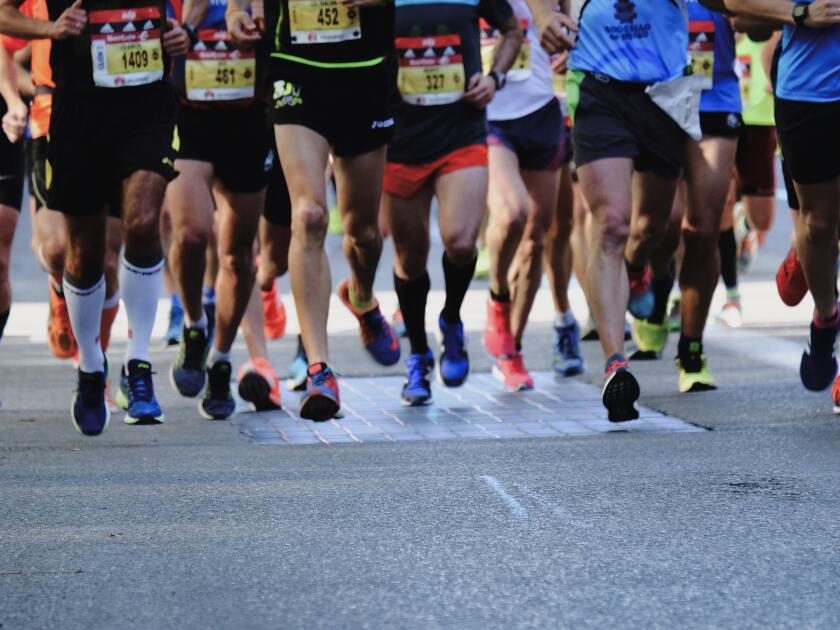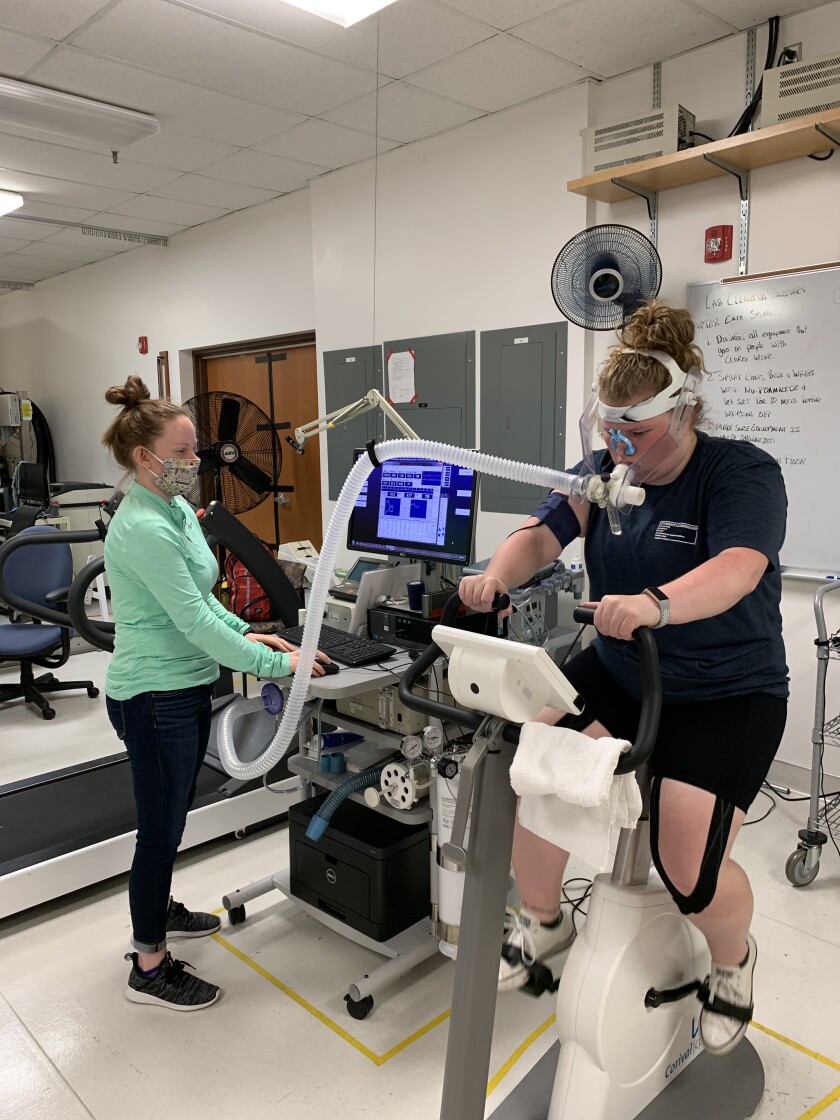The sun blazed down on the sidewalk of Provo’s Center Street as community members pounded the pavement to the finish line. The marathon started before the sun had even risen, and amongst the clumps of college students was an older gentleman dressed in bright yellow. He finished in under five hours.
While completing a 26.2-mile race is impressive at any age, stamina dramatically decreases as the decades of life accumulate. So how did this man finish before runners who were a quarter of his age?

“It’s all about sustainability,” explains Jessica Collins (BS ’18, MS ’21), who teamed up with exercise science professor Jayson Gifford to figure out and quantify why endurance performance decreases with age. They looked at race times of master athletes versus older people who still compete, including former Olympians. This sample included men and women ages thirty-five to ninety-five from across the globe.
Collins and Gifford studied these race times through the lens of a newer concept in exercise science: the critical power threshold. According to this concept, the body has a threshold—called the critical power or critical speed threshold—at which the intensity of a workout becomes too much for the body. When an athlete hits this threshold, they experience pain, fatigue, and sometimes even injury. In studying the race times of master athletes, Collins and Gifford discovered that the critical power threshold lowers with age, regardless of an individual’s athletic ability and training.
The average individual stops prioritizing exercise as work and family situations busy their schedule, but Collins and Gifford found that even master athletes experience lower thresholds with age. An individual at age thirty may successfully run marathons, but by the time that individual reaches sixty or seventy years old, just walking up and down the stairs may be over their critical power threshold.
As part of the study, participants ages eighteen to thirty-five, who weren’t endurance exercising at that time, were brought into the lab to train on bikes three times a week for eight weeks. The participants’ critical power thresholds were measured before and after the eight-week period. The training consisted of two types of exercise programs: moderate-intensity continuous training (MICT) and high-intensity interval training (HIIT). MICT is what joggers are typically doing, getting exercise without overly exhausting themselves. HIIT consists of timed intervals of MICT alternated with faster or harder endurance exercise—for example, biking at a steady pace for a period of time, ramping up the speed for a few minutes, and returning to the lower intensity to recover before repeating the cycle.

“We wanted to see which of these common programs improved the threshold more,” Collins says. “And we found that high-intensity interval training almost doubled the increase in the critical power threshold.” Thus, for individuals looking to increase their personal critical power thresholds, Collins recommends adding some HIIT to their workouts, although there are health benefits to every form of exercise. She suggests starting at current comfort levels and then working up the intensity a few times a week.
While the long days spent in the lab weren’t Collins’s favorite part of the research, connecting with the subjects and seeing their improvement throughout the study made the time she spent worth it. “It just showed me time and time again, our bodies are amazing,” she says. “They’re so powerful, and they’re so adaptable, and I just love it.”
Critical power threshold is a newer concept, and Collins and Gifford’s combined interest in the subject made the mentorship excel—even to the point that in this area of study, they are among the top experts in the world. “There’s a lot on social media about exercise and diet,” Collins says. “And a lot of times, people make it seem black and white, but there is so much gray area, and there’s so much that we don’t know.”